Finnegans Wake – A Prescriptive Guide – 25
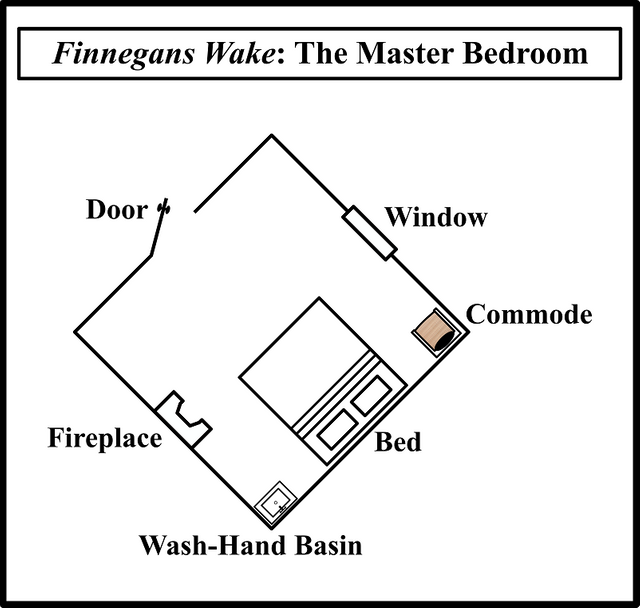
Once more from the top
In the previous article in this series, we saw that the opening paragraph of James Joyce’s Finnegans Wake can be read as a tour of the master bedroom in the Mullingar House—a tour with seven stops. The second paragraph of the book is a variation on that paragraph and takes us around the room for a second time.
Once again, we have a list of seven items:
Sir Tristram, violer d’amores, fr’over the short sea, had passencore rearrived from North Armorica on this side the scraggy isthmus of Europe Minor to wielderfight his penisolate war:
nor had topsawyer’s rocks by the stream Oconee exaggerated themselse to Laurens County’s gorgios while they went doublin their mumper all the time:
nor avoice from afire bellowsed mishe mishe to tauftauf thuartpeatrick:
not yet, though venisoon after, had a kidscad buttended a bland old isaac:
not yet, though all’s fair in vanessy, were sosie sesthers wroth with twone nathandjoe.
Rot a peck of pa’s malt had Jhem or Shen brewed by arclight
and rory end to the reggin-brow was to be seen ringsome on the aquaface.
These items can be associated with the same seven items of bedroom furniture that were featured in the opening paragraph. Some of these associations, I admit, are a little forced:
The faucet or tap: note the watery theme of the first item, with its reference to the short sea.
The sink: gorgios is glossed as gorgo, the Italian for whirlpool, which alludes to the plughole in the sink.
The fireplace: a voice from a fire makes this identification cast-iron.
The door: this is not initially obvious, but the text here alludes to the fraternal conflict between HCE and ALP’s twin sons Shem and Shaun. As we shall see, the bedroom door is a focal point in Finnegans Wake for this eternal conflict.
The window: this too is not initially obvious, but just as the bedroom door is associated with the sons of HCE and ALP, so the bedroom window is associated with their daughter Issy, who is referred to in the text at this point. The fireplace is also associated with Issy, but there the focus is on her relationship with her father HCE, whereas here her schizophrenic nature is the focal point.
The commode: Pa’s rotten malt is HCE’s urine being recycled in the chamber pot. Water becomes wine|whiskey|stout becomes water again, and so on.
HCE in bed: Rory refers to Rory or Roderick O’Conor (Ruaidhrí Ua Conchobair), the last High King of Ireland, and one of HCE’s personas in Finnegans Wake. The very first thing Joyce wrote after the publication of Ulysses was a short sketch in which Roderick O’Conor is portrayed as a publican getting drunk on the dregs left in his patrons’ glasses after closing time.
Time, Not Place
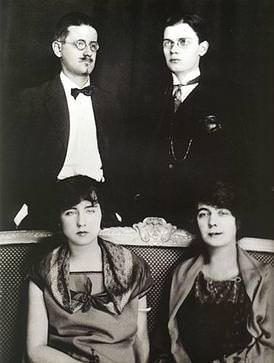
Unlike the first paragraph, in which the emphasis was on place, the second paragraph is concerned with time: the seven items listed here are seven salient events in Finnegans Wake that have not yet taken place. Identifying these events, however, and fitting them into the overarching scheme of the book is no easy task. I can’t claim to have reached the necessary level of understanding to do this.
Professor John Gordon of Connecticut College, whose interpretation of the opening paragraph I drew on in the previous article, believes he does know what these events are and how they fit into the large-scale pattern of the book. According to him, they refer to episodes in the family life of James Joyce, Nora Barnacle and their two children, Giorgio and Lucia, and comprise
the master plan of the book, overlaying and complicating the four-stage Viconian sequence which Joyce advertised. (Gordon 97-104)
Very roughly, Gordon’s master plan is as follows:
1: 1904: James Joyce and Nora Barnacle elope to the Continent of Europe
2: 1905: Their son Giorgio is born
3: 1907: Their daughter Lucia is born
4: 1914-21: World War I, the Easter Rising and Irish War of Independence, Joyce’s glaucoma
5: 1922: Irish Civil War, the publication of Ulysses
6: 1923 ff: Work in Progress
7: 1930 ff: After the Wall-Street Crash
As I said in an earlier arcticle, I don’t accept Gordon’s novelistic interpretation of Finnegans Wake. Joyce first drafted this particular paragraph in 1926, so it is impossible that he could have been writing about the 1930s. Still, there is a common consensus that Finnegans Wake contains Joyce’s autobiography buried within it, so Gordon’s ideas are always worth bearing in mind.
Recently, on his Finnegans Wake blog, he composed the following Annotator’s editorial for this paragraph:
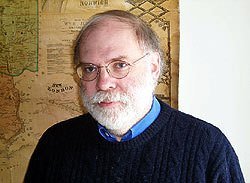
This seven-stage sequence, summing up the dreamer’s life, may relate to the tradition, mentioned in Ulysses (Bloom in “Hades:” “See your whole life in a flash.”) that someone drowning has his life flash through his mind. On FW’s last page we were heading out to sea and frightened at the prospect (628.5 [RFW 492.37-38]: “Save me from those therrble prongs!”). Since this page is a continuation of that one, the past is prologue: the seven-stage sequence is both compressed memory and compressed prophecy. The seven stages are definitely repeated at 104.10-14 [RFW 083.08-12] and, I believe, also at 126.16-24 [RFW 100.14-21] and 589.20-590.3 [RFW 459.01-17].
The Number Seven
Unlike the first paragraph, whose sevenfold nature evolved gradually from an initial seed (Howth Castle & Environs), the earliest draft of the second paragraph comprised a list of seven items from the beginning (Hayman 46):
Sir Tristram had not encore arrived from North Armorica,
nor stones exaggerated theirselves in Laurens county, Ga, doubling all the time,
nor a voice answered mishe mishe to tufftuff thouartpatrick.
Not yet had a kidson buttended an isaac
not yet had twin sesthers played siege to twone Jonathan.
Not a peck of malt had Shem and Son brewed
& bad luck to the regginbrew was to be seen on the waterface.
The associations with the seven items of bedroom furniture are not yet present, so that was obviously not part of Joyce’s original concept. But what were his intentions when he drafted this passage? One online blogger, who goes by the name Tim Finnegan, has suggested that this list could be read as a sort of table of contents for the book:
Having opened with a short simple clear (half)paragraph, Joyce proceeds to turn on the terror with a distinct list of seven things that “haven’t happened yet”. We need to look at the puzzle of why just these seven before digging into the evolution towards the published version ... It might be the lost key to the whole structure of FW, the table of contents, the schema. Or it might be something as trivial as the seven days of the week, or the seven colors of the rainbow, or the seven deadly sins. But Joyce didn’t secondguess himself as to what the basic seven were, or what order they should be presented in.
It is very frustrating to find oneself saddled with an apparently insoluble puzzle after just two paragraphs of reading! Nevertheless, the first-draft versions of these seven items do seem to refer to certain historical events (which I will examine in greater detail at a later date):
1 Sir Tristram had not encore arrived from North Armorica
- 1177 The Anglo-Norman knight Sir Amory Tristram takes Howth from the local Hiberno-Norse inhabitants
2 nor stones exaggerated theirselves in Laurens county, Ga, doubling all the time,
- 1811 The city of Dublin is built in Laurens County, Georgia, on land donated by Irish immigrant Jonathan Sawyer (or Peter Sawyer, as Joyce incorrectly dubbed him)
3 nor a voice answered mishe mishe to tufftuff thouartpatrick.
- 432 The traditional date for the introduction of Christianity to Ireland by Saint Patrick
4 Not yet had a kidson buttended an isaac
- 1879-80 Charles Stewart Parnell becomes leader of the Irish Parliamentary Party following the death of the founder and former leader Isaac Butt
5 not yet had twin sesthers played siege to twone Jonathan.
- 1707-23 Jonathan Swift has a questionable relationship with two younger women Esther Johnson (Stella) and Esther Vanhomrigh (Vanessa)
6 Not a peck of malt had Shem and Son brewed
- 1759 Arthur Guinness founds Guinness’s Brewery at St James’s Gate in Dublin
- 1810 John Jameson and Son Irish Whiskey Company is founded at Bow Street Distillery in Dublin
7 & bad luck to the regginbrew was to be seen on the waterface.
- ?? The Flood?
Although they crop up frequently throughout Finnegans Wake, I have no idea why Joyce fixated on these in particular, and not on other historical events and characters that are also important in the novel (eg the Crimean War, the Battle of Waterloo, Grace O’Malley, or the Battle of Clontarf). Answers on a postcard, please.
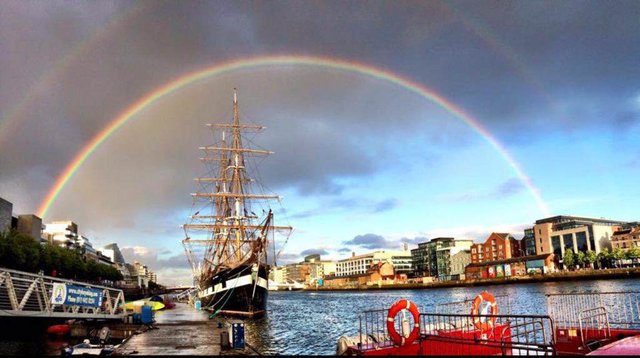
The Rainbow
Note the allusion to the rainbow in the word regginbrew. In Finnegans Wake the rainbow is a powerful symbol of renewal. It characterizes the cyclical view of history that Giambattista Vico espoused. Joyce, of course, borrowed it from Genesis 9, where God places the rainbow in the sky at the beginning of the post-diluvial age:
And I will establish my covenant with you, neither shall all flesh be cut off any more by the waters of a flood; neither shall there any more be a flood to destroy the earth. And God said, This is the token of the covenant which I make between me and you and every living creature that is with you, for perpetual generations: I do set my bow in the cloud, and it shall be for a token of a covenant between me and the earth. And it shall come to pass, when I bring a cloud over the earth, that the bow shall be seen in the cloud: And I will remember my covenant, which is between me and you and every living creature of all flesh; and the waters shall no more become a flood to destroy all flesh. (Genesis 9:11-15)
In their Skeleton Key to Finnegans Wake, Joseph Campbell and Henry Morton Robinson contrasted the rainbow with the crack of thunder:
This rainbow, the sign of God’s promise and man’s hope, with its seven hues of beauty, is one of the dominant images of Finnegans Wake. It balances the thunderclap, the signal of God’s wrath and man’s fear. (Campbell et al 29)
The American journalist Elliot Paul had already pointed up the significance of the rainbow in Mr Joyce’s Treatment of Plot, one of the twelve essays in Our Exagmination Round His Factification for Incamination of Work in Progress, which was first published in 1929:
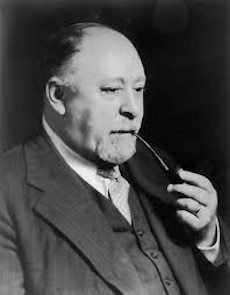
The “elements” of the plot, which are not strung out, one after the other, but are organized in such a way that any phrase may serve as a part of more than one of them, are taken from stories which are familiar to almost any one. Among these are the fall of man in the Garden of Eden. From beginning to end, a discussion of the nature of the original sin is carried on in undertones, and often comes directly to the surface. The tale of Noah’s ark, culminating with the rainbow as a symbol of God’s promise, recurs again and again, and the seven colors of the spectrum, thinly disguised, crop out in frequent passages. (Beckett et al 134)
The last two items in the second paragraph of Finnegans Wake are replete with allusions to Noah. Rot a peck of pa’s malt had Jhem or Shen brewed by arclight refers to Noah’s drunkenness:
And Noah began to be an husbandman, and he planted a vineyard: And he drank of the wine, and was drunken; and he was uncovered within his tent. And Ham, the father of Canaan, saw the nakedness of his father, and told his two brethren without. And Shem and Japheth took a garment, and laid it upon both their shoulders, and went backward, and covered the nakedness of their father; and their faces were backward, and they saw not their father's nakedness. (Genesis 9:20-23)
The arclight refers to both Noah’s Ark and the rainbow (French: arc-en-ciel). The regginbrow is also the rainbow (German: Regenbogen).
Some of the colours of the rainbow—red, yellow, blue and violet—have also been dropped into this paragraph. The familiar order, however, has been reversed. Why? In a later chapter (RFW 179.08-25) Joyce will describe a double rainbow, in which the colours run from red to violet in one rainbow and from violet to red in the other.
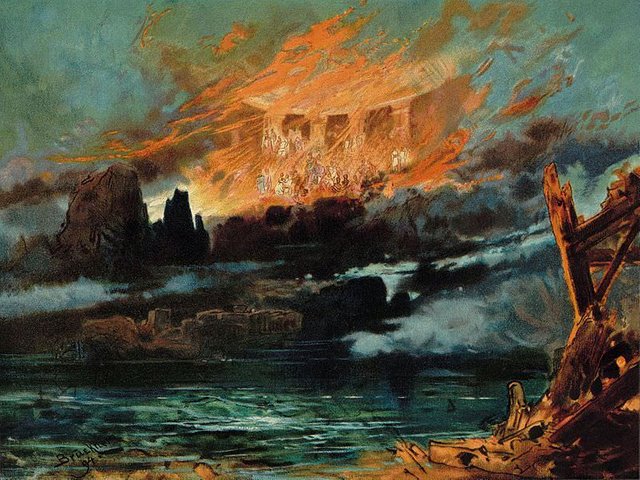
The Flood
In Genesis, the rainbow is preceded by the Flood. Finnegans Wake ends with a Flood: the River Liffey overflows its banks and drowns the Irish landscape, cleansing it of sin and guilt, and leaving a tabula rasa, or blank slate, on which the next World Cycle can be impressed. Joyce borrowed this idea from Richard Wagner’s Ring Cycle, where the Rhine washes the landscape clean so that the World can begin again.
Throughout the opening chapter of Finnegans Wake there are reminders of this recent flood, which has not yet fully abated.
References
- Samuel Beckett et al, Our Exagmination Round His Factification for Incamination of Work in Progress, Second Edition, New Directions Publishing Corporation, Norfolk CT (1962)
- Joseph Campbell, Henry Morton Robinson, Edmund L Epstein (editor), A Skeleton Key to Finnegans Wake, New World Library, Novato CA (2005)
- John Gordon, Finnegans Wake: A Plot Summary, Syracuse University Press, Syracuse NY (1986)
- David Hayman, A First-Draft Version of Finnegans Wake, University of Texas Press, Austin TX (1963)
- James Joyce, Finnegans Wake, Faber & Faber Limited, London (1939)
- Danis Rose, John O’Hanlon, The Restored Finnegans Wake, Penguin Classics, London (2012)
Image Credits
- The Master Bedroom of the Mullingar House: Self-Made, Kopimi
- The Joyce Family: © The Estate of James Joyce, Fair Use
- John Gordon: © Connecticut College, Fair Use
- A Double Rainbow over Dublin: Copyright Unknown, Fair Use
- Elliot Paul: © 1982-2017 LiveIbiza, Luis Quintanilla (photographer), Fair Use
- Götterdämmerung: Earth is Destroyed by Water and Valhalla by Fire: Wikimedia Commons, Max Brückner (set designer), Public Domain
Useful Resources

nice post my friend
great are your publications
The only person who might have understood "Finnegan's Wake" died on January 13, 1941.
Great post, Thans for sharing art images
And thank you for the nice comment.
Great writing. Thans for sharing Prescriptive Guide and provide the useful resources link.
Thank you. You're welcome.
Pleasure.How is your weekend?
nice
Very good article dear @harlotscurse
Best of luck for all post
Another great post by you brother.love you
thanks for sharing this dear
@upvote done